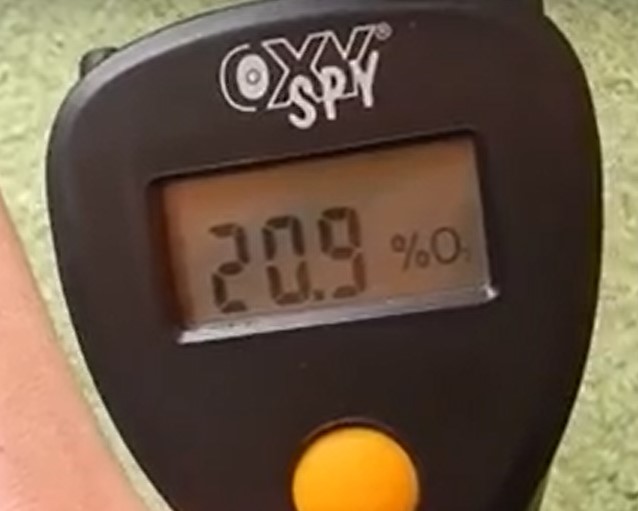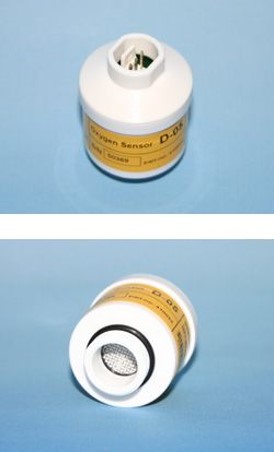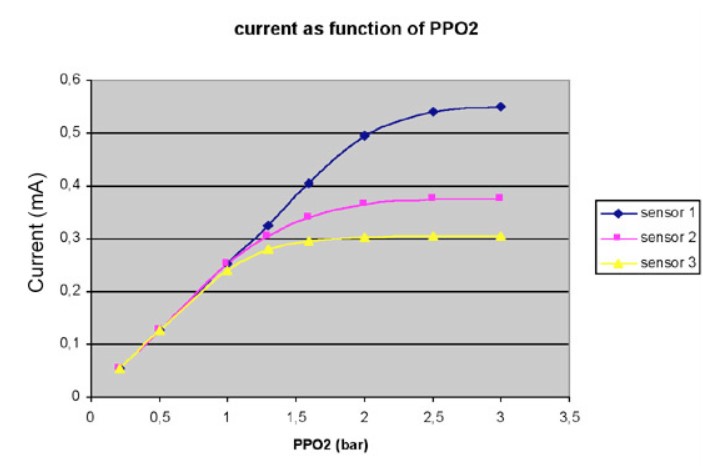Is Nitrox Safer Than Air?
Which is safer: More or less oxygen
Oxygen has advantages: It is not nitrogen – which means we absorb less nitrogen and thus have longer no-stop times. Unfortunately, an increased amount of oxygen can also cause problems for our body, so we should keep an eye on how long we can expose ourselves to an increased oxygen partial pressure and not exceed the critical limit of 1.4 bar PO2.
On the subject of oxygen toxicity – at what point is oxygen toxic? – let’s take another closer look at how the limits were set and what risks we have to assume. We then show how it works in practice to measure the oxygen content of a cylinder – the safest means of prevention available to us. In the end, you should then make a few considerations yourself as to which risks you would accept and which not.
Oxygen Toxicity
As a basic rule, we have learned not to exceed a maximum oxygen partial pressure of 1.4 bar.
In our everyday life under water, we don’t need to know much more. Nevertheless, it is interesting to look a little more closely at what forms of oxygen toxicity there are, which of them are actually relevant in diving, and what kind of risk we are actually dealing with.
Oxygen is considered by most to be something good, even “healthy”: The epitome of fresh air. Some big cities even have oxygen bars where you can breathe oxygen for a few minutes.
But: Oxygen is also a rather aggressive gas. Rust is an oxidation product, it is formed when oxygen reacts with iron (also in steel). Now we don’t have steel plates in the body, but even there the oxygen can cause damage. Oxygen is a very reactive gas, and forms free oxygen radicals, Reactive Oxygen Species (ROS), as a by-product of cellular respiration. Although these are not fundamentally harmful, they are suspected of causing damage of various kinds in excessive quantities.
In diving, the possible problems in which ROS are likely to play a role would be the two forms of oxygen toxicity.
The less dramatic, which is not a factor in normal recreational diving, is pulmonary toxicity, which is lung damage from being exposed to excessive oxygen pressures for too long. This develops after several hours, depending on the pressure. While it is interesting to know that this exists – it is practically irrelevant to us.
The form of oxygen poisoning we are afraid of in diving is central nervous system poisoning, the Paul Bert effect.
This is a really serious matter: seizures can occur, and they are usually fatal underwater. The difficulty with this type of toxicity is that there is no known “dose” at which symptoms of poisoning begin, but symptoms begin very randomly after extremely different times. During treatments in the pressure chamber, higher pressures are accepted than the limits for diving, and often for hours – yet seizures are extremely rare.
Precisely because the moment when it becomes too much is unpredictable, but the consequences in the water are fatal, extreme caution is nevertheless advisable. That’s why the limit has gotten lower in the decades since nitrox has been dived – you just want to be sure you’re not taking a massive risk for a minimal benefit. The limit of 1.4 bar pO2 during the dive should be taken really seriously. But if you ever accidentally exceed it by a few seconds, or if you have to help someone who is a few meters too deep, it can be reassuring to know that no seizures have been known to occur in less than three minutes, and that when using nitrox as deco gas, you will also be breathing 1.6 bar pO2 for a long time. So if you plan for 1.4 bar pO2 and stick to that limit, you have some leeway should you run into problems on a dive.
Analzye oxygen content
To be able to avoid oxygen poisoning, the most important thing is to know exactly what we are breathing.
To do this, it is essential to analyze what is in the tank before each dive with Nitrox. Most analyzers are really simple, and actually always work the same way.
Calibrate analyzer
When you turn on the analyzer – just press the button on the basic models – it should read 20.9, the oxygen content in the air. If it shows something different, you have to calibrate it, usually by pressing the button long. It displays “CAL” and “run” or something similar, and at the end you can read the expected 20.9.
Open bottle looooong
To measure, we need a smooth constant gas flow, you have to get a feel for that. To ensure that nothing happens to the sensor, it is best to open the bottle first and only then hold the measuring device to the bottle.
Apply GASKET to the cylinder valve
The analyzer should close directly with the valve, if air can be sucked in, the result will be falsified.
Allow gas to flow until the display no longer changes
A little patience: As long as the values are still rising, he’s not done yet. The same value should be displayed for 3-4 seconds.
Write down the result and MOD and mark the bottle
Dip only the self-measured bottle

How do O2 sensors work?
Luckily the analyzers are really very simple, just show a number and everything is fine. But how exactly does the measuring device arrive at the result? How does the sensor that measures oxygen levels work? How long do the devices last? And how can you tell that they are no longer working reliably?
A galvanic oxygen sensor sits in the plastic cover as the heart of the analyzer. On some devices, you can replace it, which is always an advantage – this part has a limited lifespan.
This sensor contains a type of fuel cell: a lead anode, a cathode, and potassium hydroxide as the electrolyte. When in contact with oxygen, chemical reactions take place here, transforming the lead into lead oxide and simultaneously generating an electric current. This current is measurable, and since it increases in proportion to the oxygen introduced, it can be used to infer the oxygen content.
This reaction gradually consumes the lead in the sensor, so it won’t last forever. And the reaction always takes place when the sensor comes into contact with oxygen – even when you are not using the device. Thus, the cells have a limited lifespan regardless of usage, but consume more quickly with intensive use.

If the cells have been in use for a long time, at some point the measurable current will become lower and lower. Therefore, it is normal that you have to calibrate every now and then. As a sensor ages and performance degrades, it manifests itself in the fact that the range in which the current generated is linear to the oxygen content becomes smaller.
What this means can be seen very clearly in this graphic (from http://www.advanceddivermagazine.com/articles/sensors/sensors.html). Shown here are three sensors as used in another application, rebreather diving. The values provided by these sensors diverge at higher pO2s: the oldest sensor already no longer measures accurately here. This deviation becomes more pronounced over time and sets in especially at lower pressures.
To ensure that the sensor of an analyzer still functions, it is therefore useful to calibrate it on pure oxygen from time to time. This simply means that you measure directly at the O2 bottle – if the expected 99% or 100% is displayed, the sensor is still good enough for our application. If you get less displayed here, you should change the sensor, from now on it can be dangerous. If the sensor produces a lower voltage, the analyzer outputs a correspondingly lower oxygen content – so we get lower values displayed than what we have in the bottle in real terms. And this mistake can have dangerous consequences.

Assess risks
Nitrox doesn’t always go the way you want it to. The analyzer has become wet or is at home, bottles are mixed up, a few meters below the MOD is a beautiful butterfly ray that you would like to photograph….
In which cases should we decide not to dive, and when can we plan our dive in such a way that it is safe despite all the uncertainties?
Here are a few scenarios to think about. You will find one scenario each. Read it over, think about it, calculate what you need to do it.
There is no “solution”, but a few decision-making aids, and then a proposed solution – which in all cases is only one possibility. The decision as to how much risk is ok for you is up to you.
Scenario 1
You are on a dive boat where almost everyone dives nitrox. A few bottles of air are also there. The membrane plant normally supplies EAN32.
Unfortunately, the only analyzer just fell into the water.
Do you still go diving?
- Under what circumstances yes, under what circumstances not?
- What can you do to ensure your dive is safe no matter what?
Decision support
- We should know for sure what gases may be on the boat. If the nitrox is produced with a membrane system, we can find out from the crew what percentage this system can deliver at most. It cannot be more than 40%, often the system does not reach more than 32%. However, when working with pure oxygen, it can always happen that significantly more than 32% end up in the bottle. With pure oxygen at 20m we would have a PO2 of 3 bar – oxygen poisoning is extremely likely.
2. The maximum depth is dictated by the oxygen content. We should make sure that we don’t get into a critical area under any circumstances. However, the basic time is determined by the nitrogen content – we should also observe this in the worst case, when we have “only” air in the bottle.
Possible solution
If gases can be on board with more oxygen, I don’t go diving. If it is absolutely clear what is technically possible at the maximum, then I’ll go.
In this case I take the MOD of the strongest possible gas (40%, or 32%, or whatever the system gives…), but leave my computer set to air. This puts me within no decompression limits if I do catch air and within depth limits if I do catch nitrox.
Scenario 2
You are with your buddy on a slope that is getting deeper and deeper. You have planned a depth of 25m and therefore an EAN36 with you to be able to dive for a long time.
As you turn around you see that your buddy is slowly going down. He doesn’t see you and doesn’t seem to notice you.
How far are you following?
Decision support
1. Are you able to get him to notice you? Shaker, horn, lamp?
2. What pO2 do you get at what depth?
3. 1.6 bar pO2 is breathed regularly over longer periods of time, and 1.8 bar pO2 was also the standard for a very long time.
4. There are no known cases in which O2 poisoning has occurred within less than 5 minutes exposure time
Possible solution
The sooner I catch my buddy, the less dangerous it is for both of us – so I would quickly follow and bring him back upstairs.
To what depth? With EAN36 I reach 1.8 bar at 40m, that should definitely be possible. Everything after that is a very individual decision that has to do with your own experience and ability – and with the relationship you have with the buddy. There is no template solution for this.
